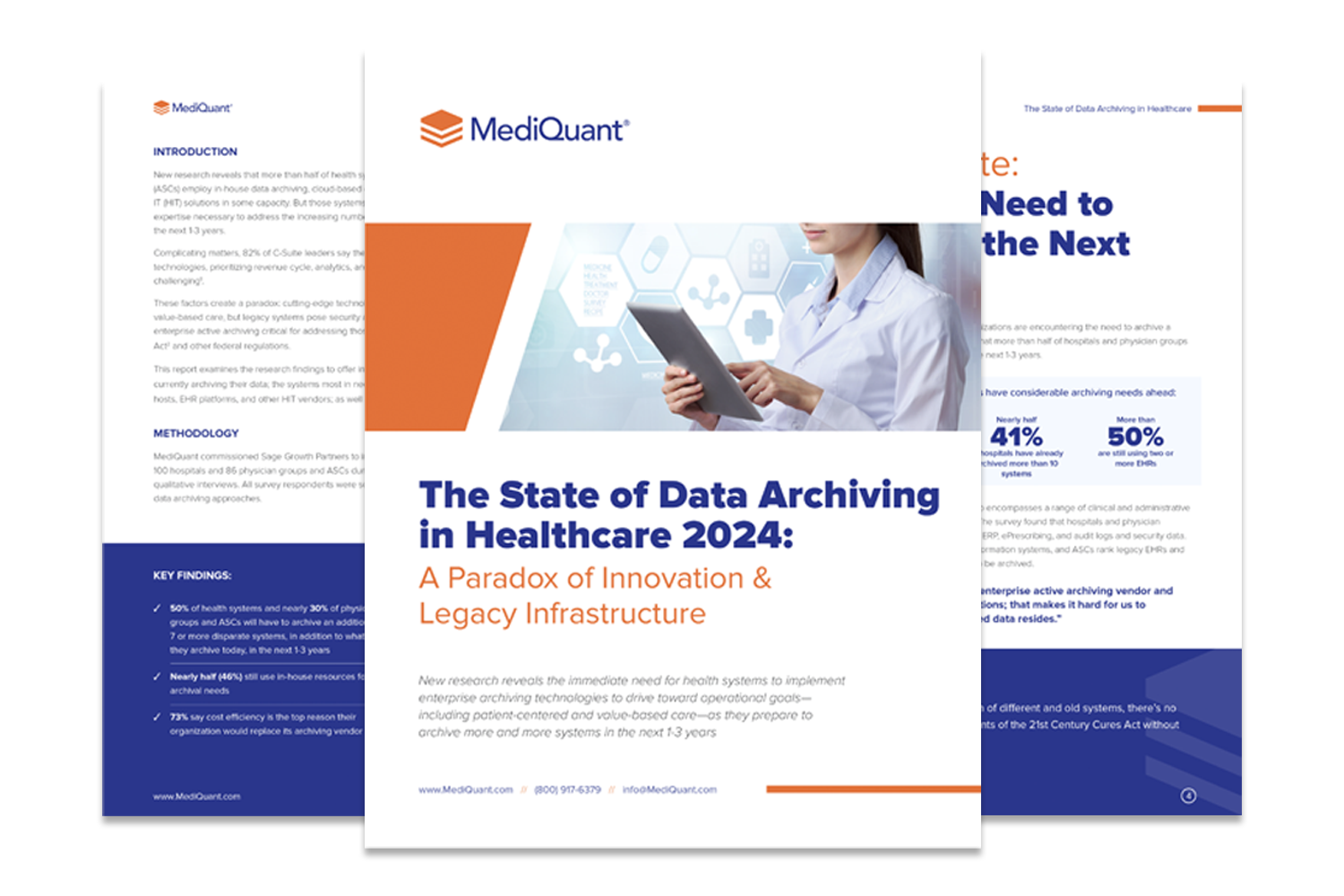Each time your practice interacts with a patient, your health record data grows. Although more patient data can result in better care and business intelligence, the massive EHR data volume can quickly become overwhelming.
The International Data Corporation (IDC) Global DataSphere research revealed that MRI scans now produce 20,000 images per head instead of the 2,000 images created years ago. This is mainly due to the use of high-resolution 3D images. Similarly, global healthcare data volume is projected to increase from 153 exabytes in 2013 to 2,314 exabytes in 2020.
Many providers have to retain a tremendous amount of health data for the long- term. There’s a need to retain data to comply with state and legal requirements. Plus, there’s a desire to use data for advanced analytics and improve the quality of care. However, many providers lack a coherent data management strategy.
You can use the following tips to create a strategic hospital data management plan that will deliver significant data benefits while minimizing processing and storage costs.
1. Create a Data Governance Policy
Data governance comprises the processes, technologies, and people required to protect and manage your organization’s data assets. A data governance policy’s principal objective is to ensure that the correct healthcare data is stored in an accurate, complete, understandable, and discoverable way.
A well-designed governance strategy will enable you to carefully choose the type of data you need and determine how to have instant access to it to solve problems related to:
- Accurate diagnosis and treatment
- Smarter decision making
- Business intelligence
- Forecasting and trend analysis
2. Capture Accurate Information
If your EHR was originally acquired solely to achieve regulatory compliance, you need to concentrate more on the quality of the information in your EHR. Verify that the correct data is entered into each health record all the time. Let all EHR users know that incorrect data can lead to life-threatening consequences if clinicians use the wrong data for diagnosis or treatment.
To minimize data entry errors, develop training programs to help users gather and enter patient data accurately. Besides that, use data verification tools to check the accuracy of data and prevent duplicate information or improper use of medical or billing codes.
3. Facilitate Access to Centralized Data
Having data in different departments without interconnectivity is a common issue in healthcare practices. To make smart decisions, you need to have access to information stored in your EHR system, as well as billing, insurance, and other financial records.
Putting all the data together is one of the best ways to maximize it for decision decision-making. Creating a central active data archive will reduce data fragmentation and put all your organization’s data in a format that you can easily retrieve from a central dashboard.
Data archiving is a more robust and effective solution than mere backup technologies. Archiving enables clinicians to gain quick access to vital information regardless of its location or format. A data archive stores and indexes your data for long-term retention, so it is easy to retrieve for studying a patient’s history or meeting compliance requirements.
Work with the Experts in Healthcare Legacy Data Management
Managing hospital data is not a trivial task. To enjoy the full benefits of an efficiently managed hospital data archive, contact the data archiving experts at MediQuant for a free consultation.


